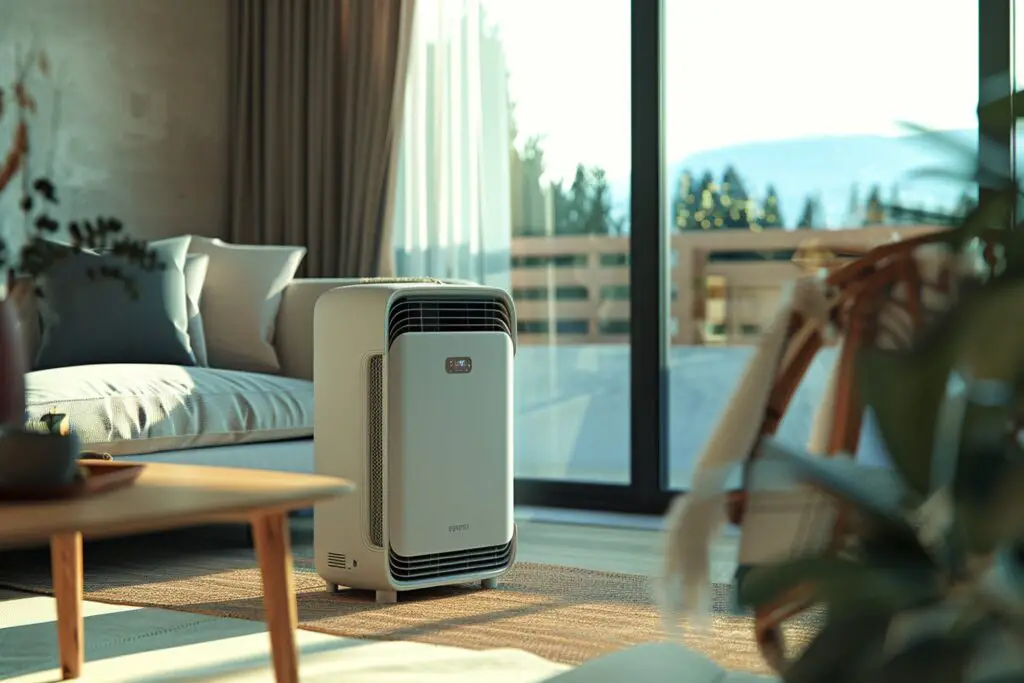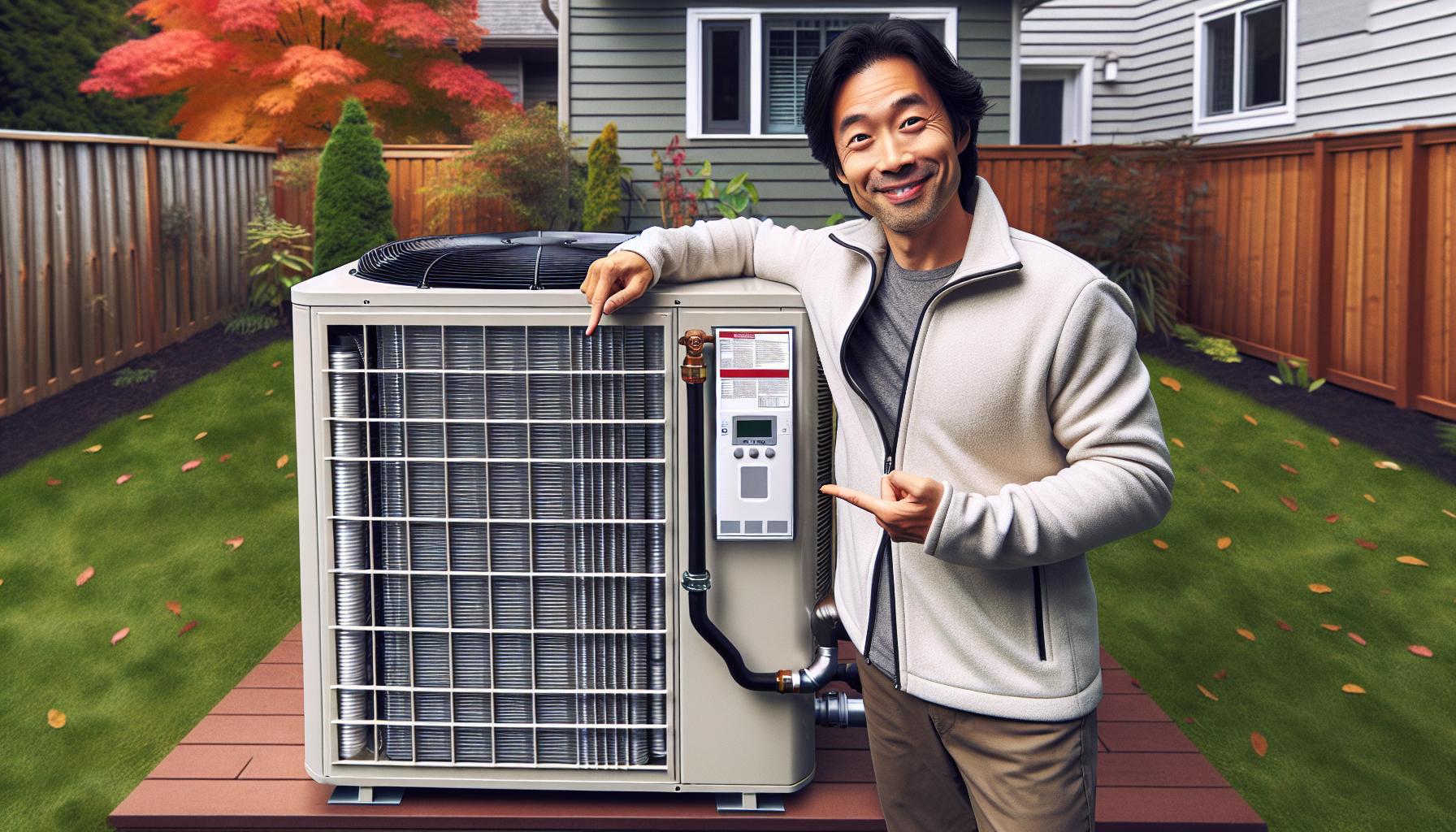Ever wondered how your portable air conditioner transforms your hot, stuffy room into a cool oasis? It’s not just a magical box of winter, it’s an intricate system that’s both fascinating and practical.
Understanding how it works not only satisfies your curiosity, but also helps you make the most of your device. So, let’s jump into the world of portable air conditioners and discover the science behind their cooling prowess. Stay tuned as we unravel the mystery of these compact yet powerful machines.
Understanding Portable Air Conditioners

Let’s further break down the enigma of portable air conditioners. By delving into their inner workings, you’re set on a path to leverage their maximum cooling potential.
What Is a Portable Air Conditioner?
Take a moment and visualize a conventional air conditioning unit installed in a window. A portable air conditioner essentially serves the same purpose, but with more mobility and versatility. Unlike its stationary counterparts, a portable air conditioner can be moved from room to room, offering a cooling solution that suits your dynamic needs.
Key Components and Their Functions
Given the integral role they play in combating stifling temperatures, it’s interesting to understand the components that make a portable air conditioner tick.
- Compressor: This is the heart of the system. Compressors pump a refrigerant through the cooling circuit, causing it to compress and emit heat.
- Condenser: Situated after the compressor, the condenser hosts the hot refrigerant. It cools and condenses this gas into a liquid form.
- Expansion valve: This component controls the amount of refrigerant entering the evaporator. It assists in turning the condensed liquid into mist.
- Evaporator: This is where the magic happens. The misty refrigerant absorbs heat from the air and evaporates. So, the air becomes cold.
- Fan: Ensures circulation of the cold air in your room. This is your respite on a hot day!
By understanding these key components and their functions, you’re enhancing your knowledge about this everyday machine. It’s quite fascinating, isn’t it? By understanding the science behind these cooling companions, you’re well-equipped to make informed choices for your cooling needs.
How Does a Portable Air Conditioner Work?
This part of our article will investigate deeper into this topic, shedding light on two crucial aspects – the role of refrigerant, and the air circulation process.
The Role of Refrigerant
Refrigerant serves a pivotal part in cooling the air. It’s a chemical that absorbs and releases heat, transition between gas and liquid states in the air conditioner cycle. When air passes over the evaporator, refrigerant absorbs the heat, and it cools down. Following this process, the refrigerant turns into gas from its liquid state due to the gained heat.
Along with this transformation, the compressor plays its part. The refrigerant, now in a gaseous state following the absorption of heat, enters the compressor. It constricts the gas, amplifying the temperature and pressure.
The subsequent destination for this hot gas is the condenser. As the refrigerant expels the heat via the condenser, it returns to its liquid form. This cooled liquid finally reaches the expansion valve, which helps regulate its flow back towards the evaporator. Hence, the cycle continues.
Air Circulation Process
The circulation of fresh air is an essential part of how a portable air conditioner functions. This process involves drawing in warm air from the room and distributing cool air in exchange.
To kick off the process, the unit’s fan draws warm air into the system. This warm air crosses paths with the cool evaporator coil, instigating the cooling process.
Post the cooling stage, the fan circulates the cooled-down air back into the room. Meanwhile, the air conditioner converts the warm air (that was once in the room) into liquid before pushing it outside through an exhaust hose. This process ensures your room gets filled with cool, fresh air while the hot air is effectively expelled.
In a nutshell, understanding the specifics of how a portable air conditioner operates improves your ability to maximise its performance. Keep in mind – maintenance is key. Regular cleaning and servicing optimise its functionality and extend the life of these convenient machines.
Benefits of Using a Portable Air Conditioner
Falling under the broad umbrella of appliance advantages, there are several key benefits to your using portable air conditioners. Providing context to its already defined operation mechanism from the previous section, you may find these devices often overshadow their fixed counterparts due to their considerable benefits integral in making life a lot easier that you might have thought. Hanging onto these, let’s explore the perks of owning a portable air conditioner.
Flexibility and Convenience
First up, you have the ‘move-me-around’ freedom attributed to these devices. Imagine you’re working from home, chirping birds providing that natural relaxation soundtrack. Then, as the sun hits its peak, your room starts to heat up, threatening your comfort. Dedicating a portable air conditioner to this situation, you can simply roll it into your sanctuary, switch it on, and cool air will fill the space. No more hassles, no sweltering heat to disrupt your day. That’s the convenience and flexibility boxed up in a single machine.
Energy Efficiency
Next, let’s talk about energy efficiency. In comparison with traditional air conditioning systems, you’ll find portable ones often climb up the ladder of energy economising. Reason being, they only cool the room you are in, effectively cutting down energy consumption and reducing your electricity bill. Based on a report by the U.S. Department of Energy, by cooling only the room you’re in, you can lower your thermostat set point and save around 3% on your energy bill per degree. For example, dropping your thermostat set point from 75°F to 72°F can decrease your cooling costs by 9%. Hence, not just a cooling solution, but also a smart, cost-saving choice is what you get with portable air conditioning units.
Choosing the Right Portable Air Conditioner
Deciphering the exact portable air conditioner suitable for your needs depends on specific factors. These factors range from room size, energy efficiency, to noise levels. Researchers from Syracuse University point out that the performance of a portable air conditioner relies on thoughtful selection and optimal usage. Hence, understanding these two aspects plays a vital role in making the most out of your appliance.
Factors to Consider
Several considerations come into play when selecting the perfect portable air conditioner for your space.
Room Size: The size of your room significantly affects the portable air conditioner you’d choose. Larger rooms demand units with higher British Thermal Units (BTUs). For instance, a room of 150 square feet may require a 5000 BTU unit, whereas a 700 square foot space may necessitate a 14,000 BTU air conditioner.
Energy Efficiency Ratio (EER): EER implies the ratio of cooling capacity (in BTU per hour) to the power input (in watts). As explained by Energy Star, an air conditioner with a higher EER rating operates more effectively, which decreases your power costs over time.
Noise Levels: Portable air conditioners do produce some noise due to the fan and compressor. Look for models with lower decibel ratings for a more peaceful environment.
Additional Features: Extra components such as a remote control, digital controls, programmable timers, and built-in air purifiers make using the air conditioner more convenient and efficient.
Tips for Optimal Use
Getting hands-on with the right portable air conditioner paves the way for efficient use. Below are some tips to ensure you’re making the most of your unit.
Right Positioning: Make sure to position your air conditioner near a window and power socket for easy set-up and optimal cooling. Also, avoid placing it near heat sources, which makes the unit work harder.
Regular Cleaning: Maintain the efficiency of the unit by cleaning the filters regularly, a process that’s simplistic and elucidated in a research by Illinois Institute of Technology. Dirty filters hamper the cooling process and consume more energy.
Proper Settings: Adjust settings according to your needs. For optimal energy efficiency, consider setting the thermostat to around 24-26 degrees during the summer months as per Energy Star guidelines.
Ventilation: Proper ventilation significantly impacts the performance of your portable air conditioner. Hence, ensure the exhaust hose runs straight from the unit to the window with as few bends as possible.
Conclusion
So, you’ve now got a solid understanding of how portable air conditioners work and the benefits they bring. You’ve learnt about the key components, the role of refrigerant, and how regular maintenance can keep your unit running smoothly. You’re now equipped to make an informed choice based on your specific needs, considering factors like room size, EER, noise levels and additional features. Remember, proper positioning and regular filter cleaning can greatly enhance your unit’s performance and energy efficiency. Armed with this knowledge, you’re ready to enjoy a cooler, more comfortable environment with your portable air conditioner. Now it’s time to put these insights into practice and experience the difference a portable air conditioner can make in your space.






